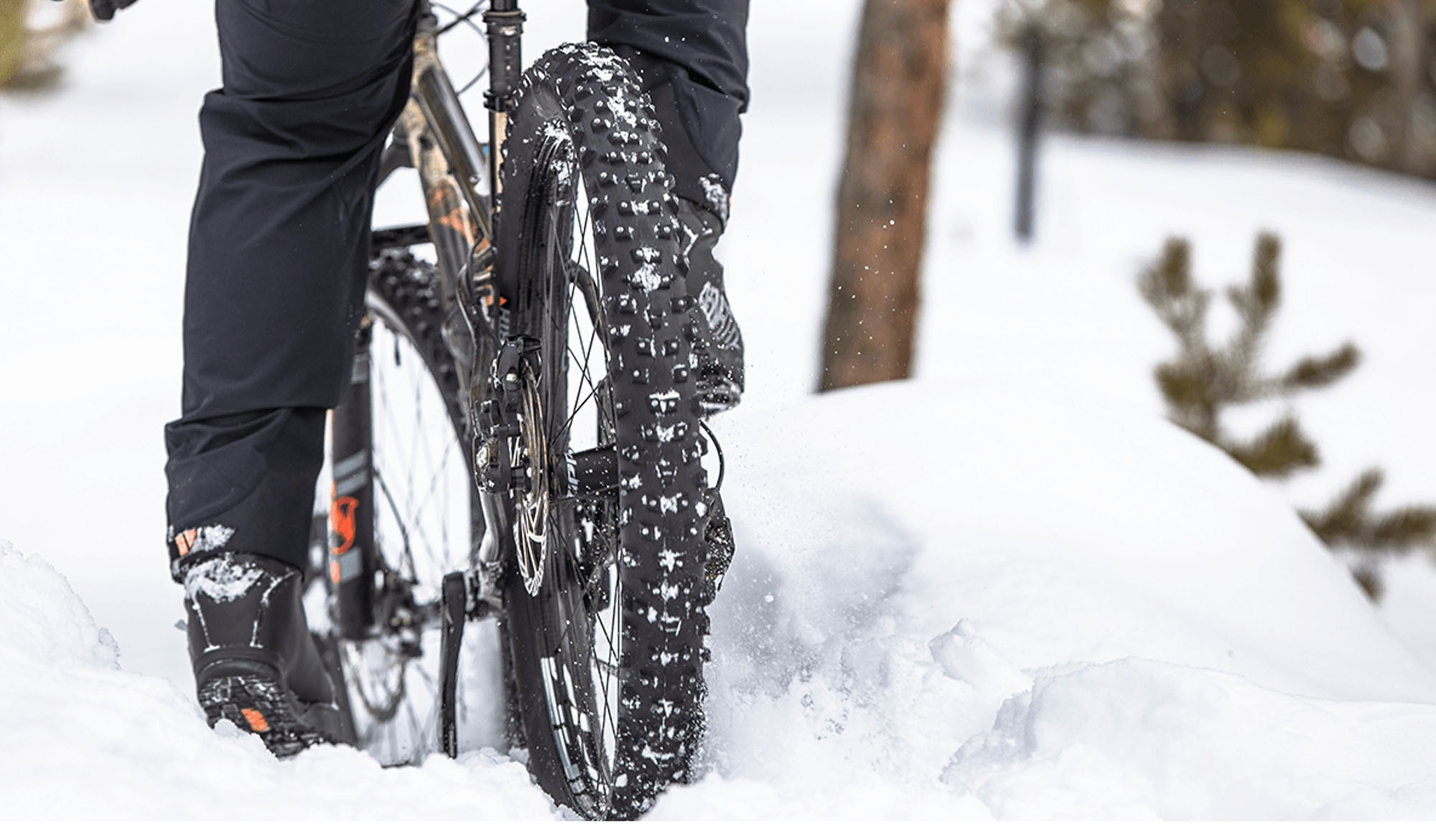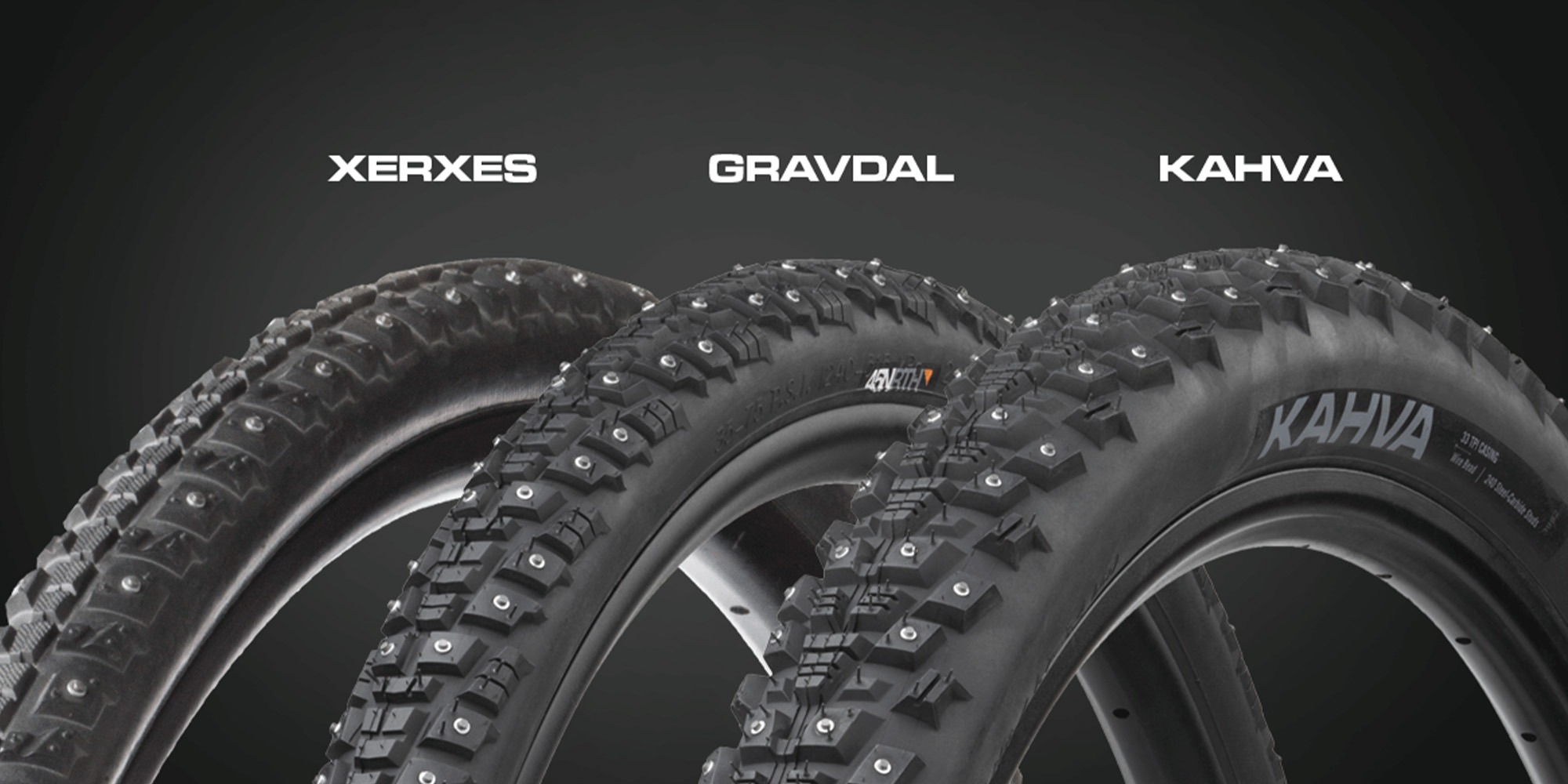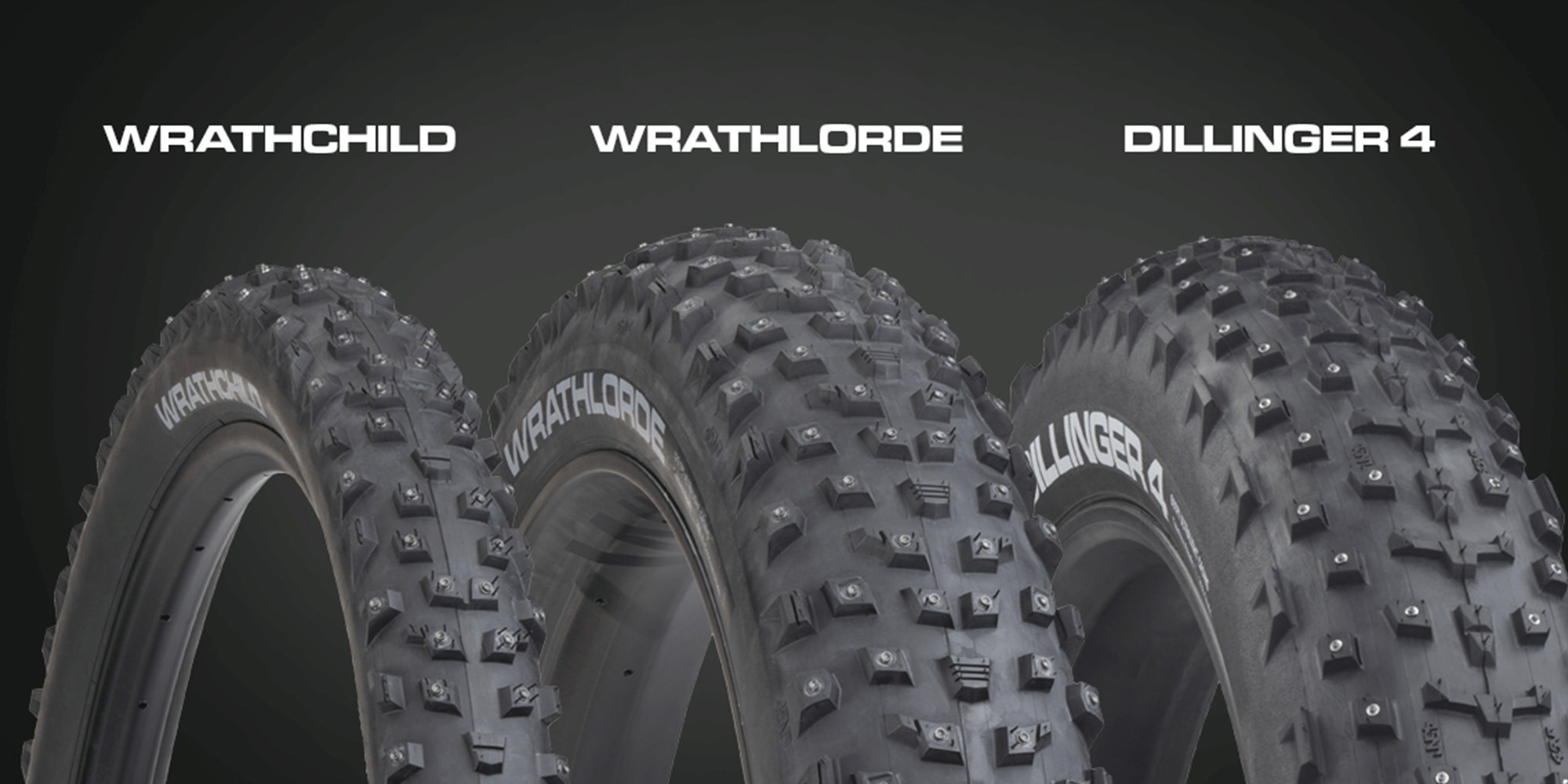Stick It to Winter: A Guide to Studded Tires
Posted by Steve on 10/27/21
Last modified: 03/31/22

Traction is essential to winter riding. It doesn’t come easily, though—winter tires have to contend with a range of slippery surfaces that most rubber never sees, from powdery snow to frozen lakes to rutted, icy bike lanes. We design all of our tires to keep you in control through various winter conditions, but our studded tires take traction to the next level on slick, icy surfaces.
What Are Studded Bike Tires?
Studded bike tires have anywhere from a few dozen to a few hundred small, metal studs embedded in the tread. These studs stick out and bite into icy road or trail surfaces to improve traction.
The Benefits of Studded Tires
Studded tires offer one major benefit: grip on slippery winter surfaces. They allow you to ride normally over ice, without fear of slipping out while pedaling, turning, or braking.
The added confidence of studded tires means you can ride more days during the winter season and decrease the risk of injury. One hidden patch of ice can easily end a riding season, so most riders see them as a worthwhile investment.
Remember that while studded tires greatly improve acceleration, braking, and handling on icy surfaces, they do not offer the same traction you’d get on a dry road or tacky dirt. Always consider the extra stopping distance required when riding in winter conditions.

When Do You Need Studded Tires?
Studded tires can come in handy in many winter riding scenarios. If you ride in an area with large temperature swings that cause a freeze/thaw cycle, studded tires are a smart choice; you never know which corner, rut, or rock garden is hiding a patch of ride-ending ice.
For winter commuters or road riders, studded tires make winter rides in the city safer by delivering traction on bike paths and bike lanes with patches of ice (especially black ice). We designed our Kahva, Gravdal, and Xerxes tires specifically for this type of riding.

For off-road riders, studded tires open up your favorite trails to winter riding, even when they’re frozen over. You can even venture onto frozen lakes and creeks (disclaimer: no ice is 100% safe—always know the ice thickness before you go out and have a self-rescue plan in case you fall through). We designed our Dillinger, Wrathlorde, and Wrathchild tires with these rides in mind.

While studded tires can enhance your winter riding, not all winter conditions call for them. Studs are not always necessary in areas with dry winters or temperatures that rarely drop below freezing, or if you only ride groomed snow trails in areas with frequent fresh powder.
Choosing the Right Studs
While you can just buy studded tires and go, you also have options that can enhance the ride experience. We offer three types of studs, each suited to different riding conditions. All of our concave studs feature an aluminum base to reduce weight and lower the risk of corrosion for a longer stud life.
XL Concave Studs are optimal for deep winter conditions. The carbide rim’s large concavity and outer diameter create a massive carbide contact patch. This contact between carbide and ice allows for supremely predictable acceleration, braking, and cornering on trails that are wind-blown, hard-packed, or straight-up icy following a freeze-thaw cycle. Since the XL Concave Stud has a deep winter focus, we recommend against using it for rides where you might encounter roots and rocks.
Large Concave Studs are useful in all-around winter trail conditions. Large Concave Studs have a slightly smaller concavity than our XL version, and a sharper carbide rim. This sharp leading edge allows it to bite into hardened ice with less force, while the lower overall profile improves stud retention.
Standard Concave Studs are ideal for commuting and trail use when conditions are unpredictable. They use a thicker, lower-profile carbide rim. A wide rim of the standard concave stud improves both durability and rolling efficiency.
Making The Most of Your Studded Setup
Studded tires will last a very long time when used exclusively in snow and ice. However, it’s common to encounter paved surfaces, rocks, roots, and other abrasive surfaces that can lead to loss of studs when grip of the stud on the riding surface exceeds the grip of the stud pocket. This “stud shed” is normal and losing a few studs here and there won’t seriously affect your ride.
To minimize stud loss, we recommend riding carefully and choosing studs based on your specific terrain and conditions (see Choosing the Right Studs above).
To reduce stud shed, it helps to ride new studded tires slowly on a firm surface such as asphalt. A few miles on a hard surface will help seat any studs that may be loose.
After that break-in period, it’s best to avoid riding pavement when possible, as this will wear your studs down faster and reduce their traction. Hard stops and sharp cornering can also rip studs out of their pockets.
Fortunately, all 45NRTH tires can be re-studded with our replacement studs. It pays to inspect your tires regularly for missing studs and replacing them as needed. Not sure how to install new studs? Watch our Tire Stud Installation video and you’ll be a pro in no time.
The Last Word
If you’re a winter commuter, trail rider, or general off-road wanderer in winter conditions where ice is common, you’ll likely benefit from the confidence and safety of studded tires. Check out our full line of studded tires to find the set that’s right for you. Your local bike shop can also help you make a tire choice based on your local conditions and needs.
If you’re new to the world of studded bicycle tires, you may not know where to start. While we’re not ones to recommend doing what everyone else is doing (we ride in subzero temperatures, after all), we put together a list of our top three studded tires. You’ll find something for every type of rider:
